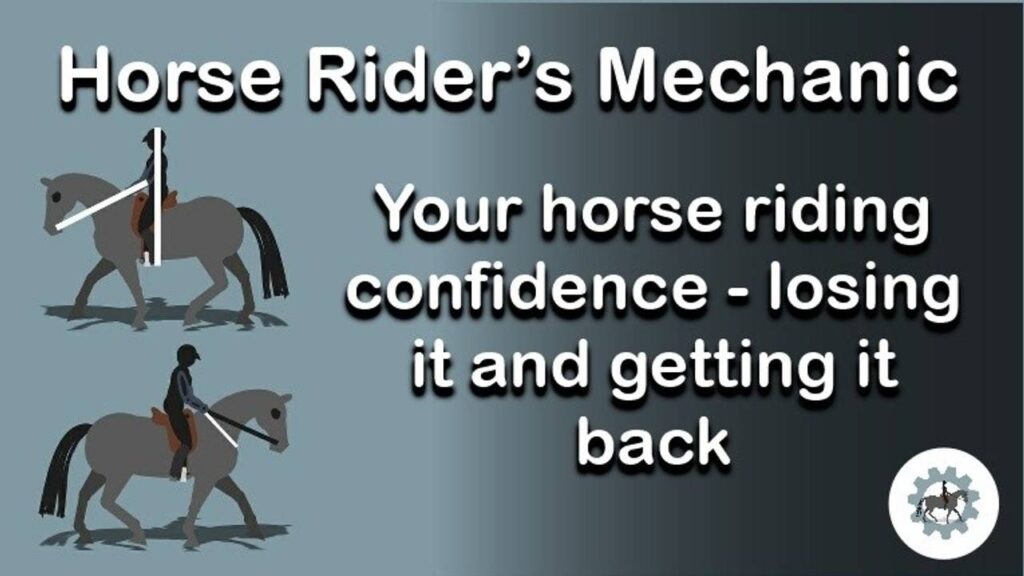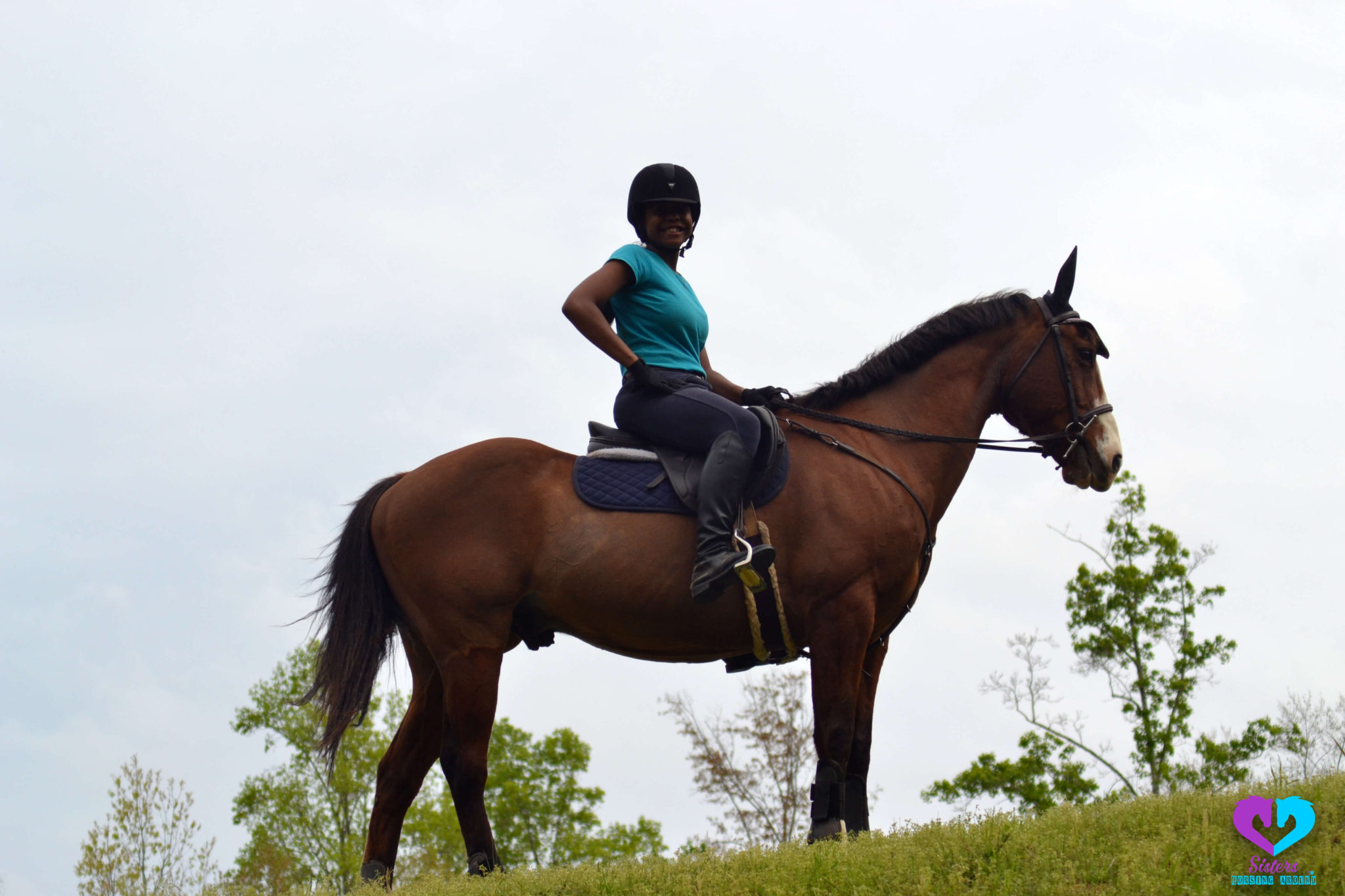In the world of horseback riding, confidence plays a vital role. It’s not just about having the skill to mount and ride a horse, but also the belief in oneself to do it with ease and grace. Confidence is what allows riders to trust their instincts, communicate effectively with their horses, and handle any unexpected situations that may arise. It is the key ingredient that transforms a timid rider into a fearless equestrian. In this article, we will explore the role of confidence in horseback riding and how it impacts both the rider’s experience and the horse’s behavior.
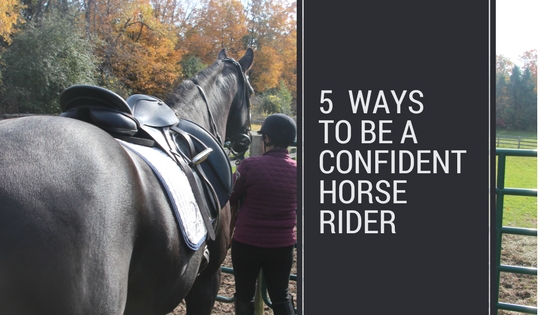
The Importance of Confidence in Horseback Riding
Horseback riding is a challenging and exhilarating sport that requires a strong sense of confidence. Confidence plays a crucial role in the rider’s overall performance, as well as their ability to connect with and control the horse. With confidence, riders can overcome fears, build trust with their horse, and achieve their goals. In this article, we will explore the importance of confidence in horseback riding, and offer tips and techniques for building and maintaining confidence as a rider.
Why Confidence is Essential in Horseback Riding
Confidence is essential in horseback riding for several reasons. Firstly, horses are highly perceptive animals that can sense a rider’s emotions and react accordingly. If a rider lacks confidence, the horse may become anxious or uneasy, making it difficult to establish a positive connection and achieve smooth communication. Secondly, horseback riding inherently involves risks, such as falls or accidents. Having confidence allows riders to face these risks and overcome challenges with resilience and determination. Lastly, confidence is vital for rider enjoyment and fulfillment. When riders feel confident, they can fully embrace the experience of horseback riding and achieve a sense of empowerment and accomplishment.
How Confidence Affects Rider Performance
Confidence has a significant impact on rider performance. When riders are confident, they are more likely to have better posture, balance, and control. Confidence enables riders to make quick and decisive decisions, communicate effectively with the horse, and execute movements with precision and finesse. With confidence, riders can navigate complex exercises, overcome obstacles, and perform at their best in competitions or shows. On the other hand, a lack of confidence can lead to hesitation, tension, and poor performance. Building and maintaining confidence is therefore crucial for achieving optimal performance in horseback riding.
The Psychological Benefits of Confidence in Riding
In addition to its impact on performance, confidence in horseback riding offers numerous psychological benefits. Riding requires riders to step out of their comfort zones and face their fears. When riders conquer their fears and develop confidence, they experience a sense of personal growth and achievement. Confidence also enhances self-esteem and self-belief, as riders become more aware of their capabilities and potential. Furthermore, horseback riding can be therapeutic and stress-relieving, and confidence amplifies these effects. A confident rider can enjoy the mental and emotional benefits of riding, such as increased mindfulness, relaxation, and a sense of connection with the horse and nature.
Building Confidence as a Beginner Rider
Building confidence as a beginner rider is a crucial first step in developing the skills and mindset necessary for successful horseback riding. Here are some strategies to help beginners overcome fear, establish trust with their horse, communicate effectively, and set achievable goals.
Understanding and Overcoming Fear
Fear is a natural response when starting any new activity, especially one that involves large and powerful animals like horses. To understand and overcome fear, beginner riders can educate themselves about horses, their behavior, and how to handle them safely. It is also helpful to work with a qualified instructor who can guide and support the rider through their fears. Gradually exposing oneself to the riding environment and taking small steps can also help in easing fear and building confidence over time.
Developing Trust in the Horse
Building trust with the horse is essential for confidence in horseback riding. Trust is established through consistent and positive interactions between the rider and the horse. Beginner riders should focus on developing a respectful and rapport-building relationship with their horse. Spending time grooming, feeding, and bonding with the horse can contribute to trust-building. Additionally, following proper handling and safety techniques, and working with a well-trained and supportive horse can enhance confidence in the early stages of riding.
Effective Communication with the Horse
Clear and effective communication with the horse is fundamental for confidence in riding. Beginner riders should learn how to properly use their aids, such as seat, legs, and reins, to give commands and signals to the horse. This can be accomplished through regular lessons with an experienced instructor who can teach riders the correct techniques and ensure they understand how to communicate with their horse. As riders become more skilled in communicating with their horse, their confidence will grow, and their ability to navigate and control the horse will improve.
Setting Achievable Goals
Setting achievable goals is essential for building confidence as a beginner rider. Goals should be specific, measurable, attainable, relevant, and time-bound (SMART). Start with small, realistic goals that can be easily accomplished, such as mastering the basic riding positions or successfully executing a specific maneuver. As riders achieve these smaller goals, they can gradually set more challenging ones, allowing them to stretch their abilities and build confidence in their progression. Celebrating each milestone and acknowledging progress along the way can further enhance confidence and motivation.
Positive Reinforcement and Encouragement
Positive reinforcement and encouragement are powerful tools for building confidence in beginner riders. Instructors and mentors should provide constructive feedback, highlighting the rider’s strengths and improvements while offering guidance for areas that need development. Reinforcing achievements, no matter how small, can boost confidence and motivation. Encouraging words, praise, and support from instructors, fellow riders, and family and friends can also play a pivotal role in building confidence and fostering a positive riding experience for beginners.
Techniques to Boost Confidence in Horseback Riding
Once a beginner rider has established a foundation of confidence, it is essential to continue strengthening and enhancing that confidence as they progress in their riding journey. Here are some techniques that can help boost confidence and improve riding skills:
Proper Riding Position and Balance
A proper riding position and balance are crucial for confident and effective riding. Riders should focus on maintaining a balanced and aligned posture, with their weight evenly distributed in the saddle. Learning to relax and move with the horse’s motion while keeping a strong and stable core can greatly improve confidence and control. Regular practice of proper riding position and balance, both on and off the horse, can help riders develop muscle memory and improve their overall riding skills.
Strengthening Riding Skills through Practice
Practice is key to building confidence and improving riding skills. Regular and consistent practice allows riders to become more familiar and comfortable with the movements and exercises involved in horseback riding. It provides an opportunity to refine techniques, reinforce communication with the horse, and develop muscle strength and coordination. By dedicating time to practice, riders can enhance their abilities, which in turn boosts confidence and performance.
Visualization and Mental Imagery
Visualization and mental imagery techniques can be powerful tools for building confidence in horseback riding. By picturing successful rides, envisioning themselves executing maneuvers flawlessly, and imagining positive outcomes, riders can create a mental blueprint for success. Visualizing riding scenarios can help reduce anxiety, increase focus, and enhance confidence when faced with real-life riding situations. Incorporating visualization techniques into regular practice sessions can have a significant impact on a rider’s confidence and performance.
Breathing and Relaxation Exercises
Proper breathing and relaxation are essential for maintaining confidence and composure while riding. Deep breathing techniques can help calm nerves, lower heart rate, and release tension. Practice breathing exercises before, during, and after rides to regulate emotions and promote a state of relaxation. Riders should focus on breathing deeply into their diaphragm, inhaling through the nose, and exhaling slowly through the mouth. Incorporating relaxation exercises, such as progressive muscle relaxation or mindfulness techniques, can also contribute to a more confident and centered riding experience.
Mindfulness and Focus
Mindfulness and focus are crucial for building confidence in horseback riding. Being fully present in the moment allows riders to connect with their horse, anticipate their movements, and respond appropriately. Practicing mindfulness techniques, such as deepening sensory awareness, maintaining a non-judgmental mindset, and staying attuned to the horse’s cues, can enhance confidence and concentration. By cultivating a focused and present mindset, riders can ride with greater clarity, control, and confidence.
Building Confidence with the Right Horse
Finding the right horse is a significant factor in building and maintaining confidence in horseback riding. A horse that matches the rider’s skill level, personality, and goals can greatly contribute to a positive and confident riding experience. Here are some considerations when seeking the right horse:
Choosing the Right Horse for Your Skill Level
Choosing a horse that matches your skill level is crucial for building confidence. Riders should consider their experience, abilities, and comfort level when selecting a horse. A horse that is too advanced or challenging can lead to frustration and fear, while a horse that is too inexperienced or docile can hinder a rider’s progression. Working with a knowledgeable instructor or trainer to assess your skill level and find a suitable horse is essential for building confidence in your riding abilities.
Matching Rider and Horse Personalities
Matching personalities between rider and horse can significantly impact confidence in horseback riding. Some riders may thrive with a spirited and forward-thinking horse, while others may prefer a calmer and more steady horse. Understanding your own personality and riding preferences can help guide you in finding a horse with compatible traits. Building rapport and trust is easier when there is a natural alignment between rider and horse personalities, leading to a more confident and positive riding experience.
Working with a Trained and Supportive Horse
Choosing a trained and supportive horse is beneficial for building confidence, especially for beginner or less experienced riders. A well-trained horse that understands and responds to cues can help riders feel secure and in control. Supportive horses that are patient, forgiving, and reliable can empower riders to take risks, learn new skills, and build their confidence gradually. Working with a trusted instructor or mentor who can match you with a trained and supportive horse is invaluable in fostering confidence and competence as a rider.
Building a Bond and Partnership with Your Horse
Building a bond and partnership with your horse is an essential aspect of developing confidence in horseback riding. Spend time getting to know your horse, understanding their behavior, and establishing trust through consistent and positive interactions. Participating in activities such as grooming, groundwork, and bonding exercises can strengthen the connection between rider and horse. Building a partnership based on trust, respect, and clear communication lays the foundation for a confident and harmonious riding experience.
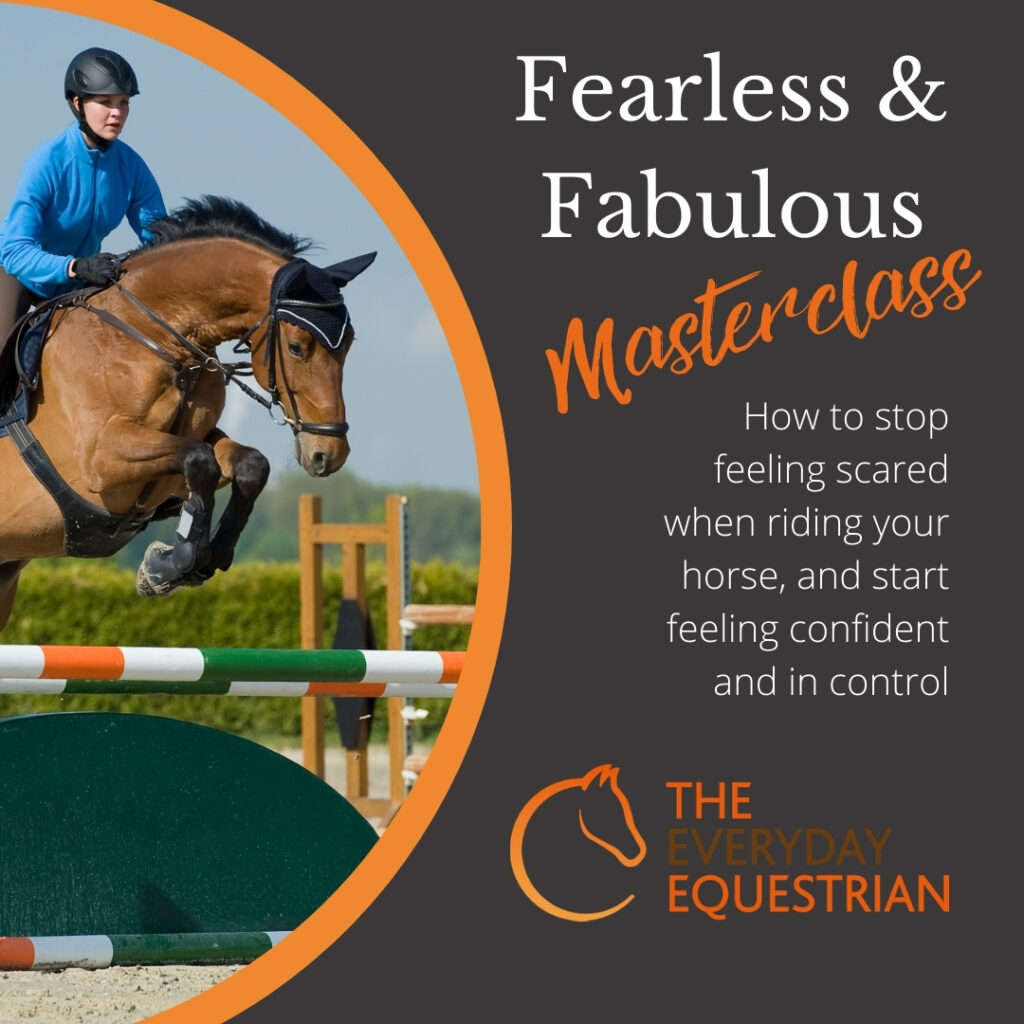
Dealing with Confidence Challenges
Despite the best efforts to build and maintain confidence, riders may still face challenges that shake their self-assurance. Whether it’s overcoming past accidents or injuries, addressing confidence issues after a fall, dealing with performance anxiety, or coping with fear of failure, it is important to acknowledge and address these challenges. Seeking professional guidance, support, and employing specific strategies can help riders overcome confidence challenges and continue to progress in their riding journey.
Overcoming Past Riding Accidents or Injuries
Past riding accidents or injuries can have a significant impact on a rider’s confidence. To overcome the fear associated with such experiences, riders should focus on gradual exposure to riding again, starting with calm and supportive horses, and gaining confidence through small successes. Working with a qualified instructor or therapist who specializes in trauma can provide valuable guidance and a safe environment for healing and rebuilding confidence. Patience, self-compassion, and setting realistic goals are key in overcoming past riding accidents or injuries.
Addressing Confidence Issues after a Fall
Experiencing a fall while riding can shake a rider’s confidence. It is essential to address any lingering confidence issues to prevent them from becoming long-term limitations. Reflecting on the circumstances surrounding the fall, understanding any contributing factors, and working through any fear or anxiety is crucial. Gradually easing back into riding, focusing on regaining trust with the horse, and seeking support from instructors or peers can help restore confidence after a fall. Taking the time to rebuild confidence at a comfortable pace is essential for an individual’s well-being and continued growth as a rider.
Dealing with Performance Anxiety
Performance anxiety can affect riders of all skill levels and hinder confidence during competitions, shows, or even casual riding. To address performance anxiety, riders can develop strategies such as mental preparation, positive self-talk, visualization, and deep breathing exercises. Creating a routine and familiarizing oneself with the competition or show environment can also reduce anxiety. Seeking support from coaches, trainers, or mental skills professionals who specialize in sports psychology can provide valuable techniques and guidance for managing and overcoming performance anxiety.
Coping with Fear of Failure
The fear of failure can be a significant barrier to confidence in horseback riding. Riders may feel hesitant to take risks, try new skills, or push themselves beyond their comfort zone due to the fear of making mistakes or not meeting expectations. To cope with the fear of failure, riders should reframe their mindset and focus on the learning process rather than solely on results. Recognizing that failures and setbacks are part of the journey can help alleviate the pressure and foster a growth-oriented perspective. Seeking support from mentors, instructors, or a supportive riding community can also provide encouragement and perspective when dealing with the fear of failure.
Seeking Professional Guidance and Support
Addressing confidence challenges may require the support and guidance of professionals who specialize in rider psychology, horsemanship, or sports psychology. Seeking expert advice can provide riders with personalized strategies, tools, and techniques to overcome fears, build confidence, and reach their riding goals. A qualified instructor or coach can offer valuable insight, assess individual strengths and areas needing improvement, and tailor training programs to boost confidence. Additionally, joining support groups, attending workshops or clinics, or finding a mentor within the riding community can offer a supportive network and a wealth of knowledge and experience to draw upon.
Confidence-Building Exercises and Activities
Engaging in specific exercises and activities can expedite the process of building confidence in horseback riding. These activities provide opportunities to develop skills, face challenges, and reinforce positive experiences. Here are some exercises and activities that can contribute to confidence-building:
Groundwork and Horsemanship Skills
Groundwork exercises and horsemanship skills lay the foundation for confident riding. Groundwork involves various activities performed with the horse on the ground, such as leading, lunging, and desensitization exercises. These exercises help establish trust, improve communication, and build a bond between rider and horse. By gaining confidence in handling and interacting with the horse on the ground, riders can transfer that confidence to the saddle.
Trail Riding and Exposure to New Environments
Trail riding exposes riders to diverse environments and scenarios, helping them become more adaptable and confident riders. Riding on trails introduces riders to different terrain, obstacles, and distractions, challenging their problem-solving skills and decision-making abilities. By gradually increasing the level of difficulty and exposure to new environments, riders develop flexibility and confidence in handling unexpected situations. Trail riding also allows riders to enjoy the beauty of nature and the unique connection with their horse.
Obstacle Course Training
Obstacle course training provides riders with a fun and challenging way to build confidence and enhance their riding skills. Obstacle courses consist of various objects and tasks that riders and horses must navigate together. By successfully maneuvering through obstacles, riders develop problem-solving skills, lateral thinking, and adaptability. Obstacle courses encourage riders to communicate effectively with their horse and develop trust in their abilities. Through progressive training and exposure to different obstacles, riders can conquer fear, boost confidence, and broaden their horsemanship skills.
Participating in Horse Shows or Competitions
Participating in horse shows or competitions can be both nerve-wracking and confidence-building. Shows and competitions offer riders the opportunity to showcase their skills, receive feedback from judges, and compare themselves to other riders. While the competitive environment may initially provoke anxiety, it also provides a platform for growth and personal achievement. By setting realistic goals, preparing thoroughly, and focusing on personal progress rather than external outcomes, riders can gain confidence and experience personal fulfillment through participation in shows and competitions.
Working with a Coach or Mentor
Working with a coach or mentor is a valuable confidence-building strategy. A knowledgeable and experienced coach can provide guidance, offer constructive feedback, and design training programs to target individual needs. They can assess a rider’s strengths and areas requiring improvement, break down complex skills into manageable steps, and provide encouragement and support along the way. Mentors, both within riding communities and professional organizations, offer valuable insights, guidance, and camaraderie, fostering a sense of belonging and support for riders.
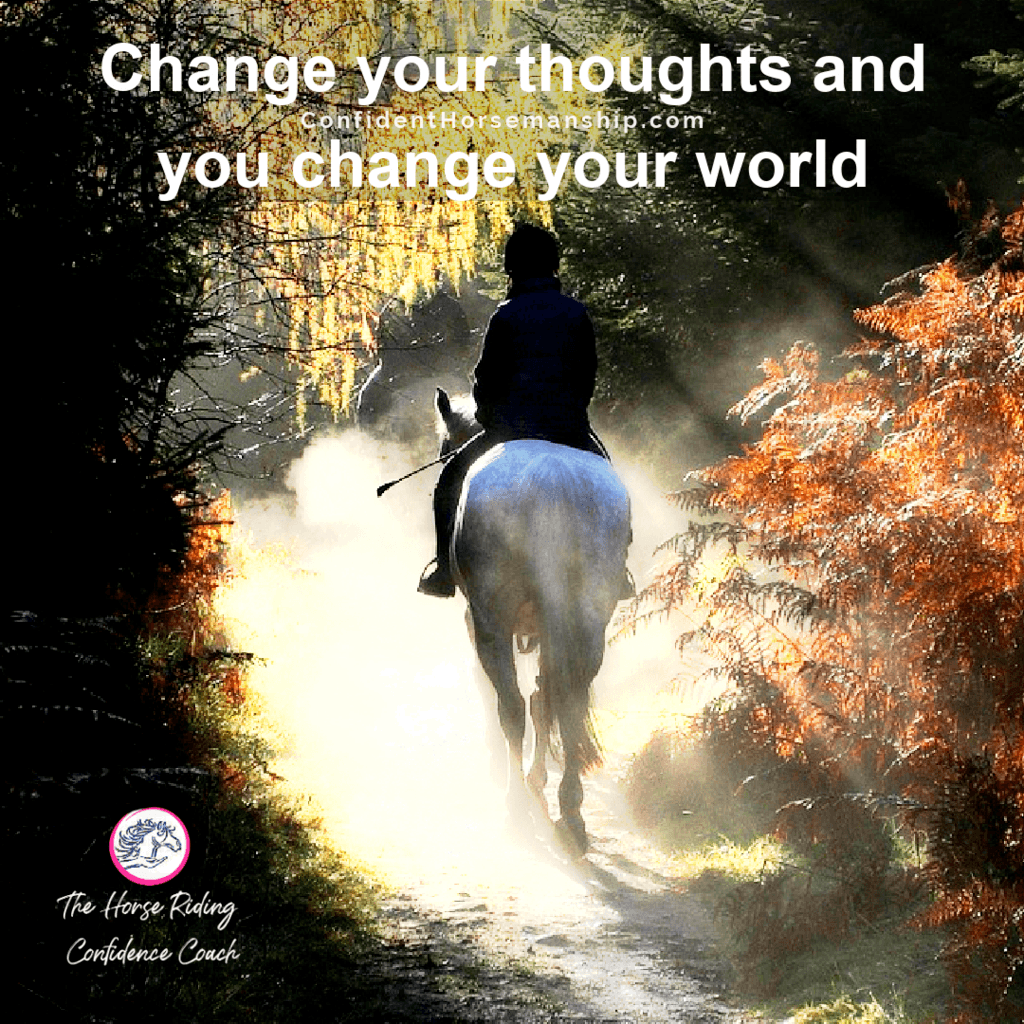
The Role of Training in Building Confidence
Structured training plans and progressive skill development play a vital role in building and maintaining confidence in horseback riding. Here is how training contributes to confidence-building:
Structured Lesson Plans and Progression
Structured lesson plans provide riders with a clear path for skill development, enabling them to build confidence through progressive learning. Starting with foundational skills, riders gradually progress to more complex exercises and maneuvers. A well-structured curriculum ensures that riders are challenged at an appropriate level and allows for measurable progress over time. Consistent exposure to new skills and challenges, combined with frequent feedback and guidance from instructors, builds competence and confidence in riders.
Gradual Exposure to More Challenging Exercises
Gradually exposing riders to more challenging exercises and situations is key to building confidence. As riders master foundational skills, instructors can introduce progressively difficult exercises that require increased focus, balance, and control. By gradually pushing boundaries and expanding comfort zones, riders gain confidence in their abilities to successfully navigate more complex movements. Patient and gradual exposure to challenges allows riders to grow and develop their skills at a pace that matches their individual needs and abilities.
Gradually Increasing Riding Difficulty
Gradually increasing riding difficulty is an important aspect of building confidence. Riding difficulty can be enhanced by introducing new riding disciplines, riding in different environments, or working with horses that require more advanced skills. This progressive increase in difficulty ensures that riders are constantly growing and challenging themselves, developing both competence and confidence. By setting incremental goals and working through increasingly demanding exercises, riders can push their limitations, expand their skills, and strengthen their overall confidence.
Working through Fear and Anxiety in Training
Training provides a safe environment for riders to address and work through their fears and anxieties. Instructors can guide riders in developing coping mechanisms, building trust, and challenging negative thought patterns related to fear and anxiety. Gradual exposure to fear-inducing scenarios, combined with supportive coaching and encouragement, can help riders overcome their fears and build confidence. As riders gain experience and witness their own progress, fear and anxiety are gradually diminished, empowering them to face challenges and thrive in their riding journey.
Building Trust in the Training Process
Building trust in the training process is essential for confidence-building. Riders should trust their instructors, trainers, and coaches to provide them with appropriate guidance, support, and expertise. Developing trust in the training process also involves recognizing the incremental progress made over time and the value of consistent practice and dedication. Trusting the process allows riders to remain committed to their training, even in the face of challenges or setbacks, ultimately leading to increased confidence and growth as riders.
Overcoming Mental Blocks and Self-Doubt
Mental blocks and self-doubt can undermine a rider’s confidence and hinder their progress. Overcoming these psychological barriers is crucial for building confidence in horseback riding. Here are some strategies to overcome mental blocks and self-doubt:
Identifying and Challenging Negative Thoughts
Identifying and challenging negative thoughts is the first step in overcoming mental blocks and self-doubt. Riders should pay attention to their inner dialogue and recognize any negative or self-limiting beliefs. It is vital to question and challenge these thoughts with evidence of past successes, positive affirmations, or supportive feedback from instructors. By reframing negative thoughts and replacing them with more positive and empowering perspectives, riders can shift their mindset and strengthen their confidence.
Replacing Self-Doubt with Positive Affirmations
Replacing self-doubt with positive affirmations is a powerful technique to boost confidence. Riders should cultivate a positive self-talk by consciously repeating affirmations that reinforce their abilities and strengths. Affirmations such as “I am a skilled and confident rider” or “I am capable of overcoming any challenges” can rewire the mind’s beliefs and bolster confidence. Incorporating these positive affirmations into daily routines, both on and off the horse, can anchor a mindset built on self-assurance and self-belief.
Practicing Visualization and Mental Rehearsal
Visualization and mental rehearsal involve picturing and mentally rehearsing successful rides and accomplishments. By visualizing themselves executing maneuvers flawlessly, riders can enhance their confidence and familiarize themselves with the feeling of success. Regular practice of visualization techniques, particularly before challenging rides or competitions, can alleviate anxiety, create a positive expectation, and prime the mind for successful outcomes. Visualizing positive scenarios builds confidence, as the mind cannot distinguish between a vividly imagined experience and a real one.
Using Mantras and Power Words
Incorporating mantras and power words into riding routines can empower and boost confidence. Mantras are concise phrases that serve as reminders of personal strength and capability. Riders can choose mantras such as “I am brave and capable,” “I trust myself and my horse,” or “I embrace challenges with confidence.” Power words, on the other hand, are single words that elicit a strong emotional response, such as “courage,” “strength,” or “focus.” Repeating mantras or power words silently or out loud during rides can anchor a positive mindset and fortify confidence in the face of challenges or self-doubt.
Creating a Supportive Riding Environment
Creating a supportive riding environment is crucial for overcoming mental blocks and self-doubt. Surrounding oneself with like-minded riders, supportive mentors, and a positive community can provide encouragement, motivation, and a sense of belonging. Engaging in open and honest conversations about fears, challenges, and successes within the riding community can foster a supportive and nurturing environment. By actively participating in a supportive network, riders can find solace, guidance, and inspiration, ultimately bolstering their confidence and belief in their abilities.

The Role of Experience in Confidence-Building
Experience plays a vital role in building and reinforcing confidence in horseback riding. Here is how experience contributes to confidence-building:
Gaining Confidence through Exposure to Various Riding Situations
Gaining experience through exposure to various riding situations is key to building confidence. By gradually facing different challenges, riders become more adaptable and resilient. Riding experiences that involve diverse environments, such as riding on different terrains, participating in group rides, or encountering potential distractions, help riders expand their skills and comfort zones. Exposure to a range of situations builds confidence, as riders become more adept at navigating complexities and handling unexpected scenarios.
Learning from Experienced Riders and Mentors
Learning from experienced riders and mentors is invaluable in building confidence. Observing and seeking guidance from riders with extensive experience can provide valuable insights, strategies, and inspiration. Experienced riders can offer advice on overcoming challenges, share personal stories of triumph and growth, and serve as role models for aspiring riders. Actively engaging with mentors and experienced riders facilitates knowledge transfer, encouragement, and the assurance that success in horseback riding is attainable with perseverance and dedication.
Reflecting on Past Successes and Achievements
Reflecting on past successes and achievements is a powerful confidence-building exercise. By revisiting milestones, riders can appreciate how far they have come and recognize their growth and competence. Actively acknowledging past accomplishments and overcoming adversity serves as a reminder that progress is possible and that riding challenges can be conquered. Reflecting on positive experiences fuels motivation, fosters a positive mindset, and reinforces confidence in facing future riding endeavors.
Embracing Challenges and Taking Calculated Risks
Embracing challenges and taking calculated risks is essential for cultivating confidence. Riders should actively seek opportunities to push their boundaries and expand their comfort zones. Embracing challenges can involve trying new disciplines, participating in more rigorous rides or competitions, or working with horses that require advanced skills. By stepping out of their comfort zones and persisting in the face of challenges, riders develop resilience, adaptability, and increased confidence in their abilities.
Continual Learning and Skill Development
Continual learning and skill development are crucial for maintaining and enhancing confidence in horseback riding. Riders should approach their riding journey with a growth mindset and embrace lifelong learning. Continual learning involves engaging in regular lessons, clinics, workshops, and educational resources that provide new knowledge, insights, and techniques. By actively pursuing skill development, riders continuously reinforce their competence and expertise, reinforcing their confidence in both familiar and novel riding situations.
Maintaining Confidence in the Long Term
Maintaining confidence in the long term requires ongoing efforts and a proactive approach. Here are some strategies for sustaining confidence in horseback riding:
Consistency in Riding Practice
Consistency in riding practice is essential for maintaining confidence. Regularly engaging in riding lessons, practice sessions, and routines helps riders stay connected with their skills and maintain a sense of familiarity and comfort in the saddle. Consistent practice ensures that muscle memory, reflexes, and communication with the horse remain sharp, providing a foundation for continued growth and confidence.
Periodically Reevaluating Goals and Progress
Periodically reevaluating goals and progress is necessary for long-term confidence maintenance. As riders achieve their goals, it is important to set new and challenging ones to sustain motivation and drive. Regularly assessing progress against established goals allows riders to celebrate achievements, recognize areas of improvement, and adjust their training plans as needed. By setting and pursuing challenging yet attainable goals, riders maintain an ongoing sense of purpose and motivation, leading to sustained confidence in their riding abilities.
Seeking New Riding Experiences and Adventures
Seeking new riding experiences and adventures is essential for long-term confidence building. Exploring different riding disciplines, participating in clinics or workshops, or embarking on riding vacations in new locations provides fresh challenges and learning opportunities. Venturing out of one’s comfort zone and embracing novel experiences enhances adaptability, resilience, and self-assurance as a rider. Trying new riding experiences also offers a sense of excitement and novelty, contributing to sustained engagement and confidence.
Don’t Let Setbacks Define Your Confidence
Setbacks are a natural part of any journey, including horseback riding. It is crucial not to let setbacks define one’s confidence. Instead, view setbacks as learning opportunities and stepping stones towards improvement. Acknowledge that setbacks can occur, and by embracing challenges, identifying areas for growth, and seeking support, setbacks can be overcome. Maintaining a resilient mindset and embracing a growth-oriented perspective allows riders to bounce back from setbacks, swiftly restore confidence, and continue progressing in their riding journey.
Building a Supportive Riding Community
Building a supportive riding community is vital for maintaining confidence in the long term. Surrounding oneself with like-minded riders, mentors, and a network of supportive individuals provides encouragement, camaraderie, and accountability. Engaging in regular interactions, such as participating in group rides, attending social events, or joining online communities, fosters a sense of belonging and support. A supportive riding community offers a safe space to share challenges, seek advice, celebrate successes, and ultimately sustain confidence and motivation in horseback riding.
In conclusion, confidence plays a fundamental role in horseback riding. It influences rider performance, affects the connection with the horse, and contributes to overall enjoyment and fulfillment. Building and maintaining confidence involves understanding and overcoming fear, developing trust with the horse, effective communication, and setting achievable goals. Techniques such as proper riding position, visualization, and mental imagery, and creating a supportive riding environment all contribute to confidence-building. Experience, ongoing training, and a proactive approach ensure long-term confidence in horseback riding. By embracing challenges, seeking support, and continuously developing skills, riders can cultivate unwavering confidence and excel in their equestrian pursuits.
